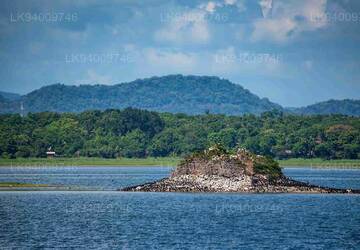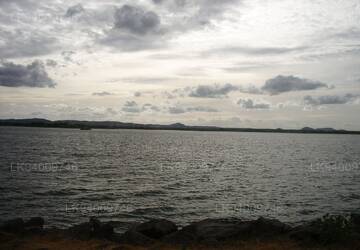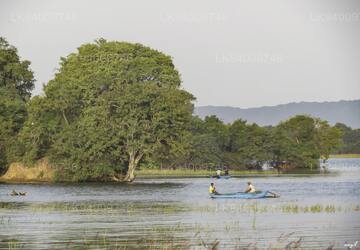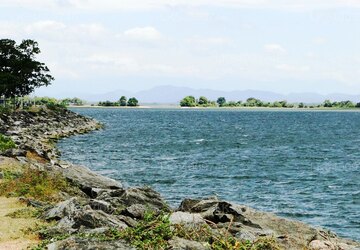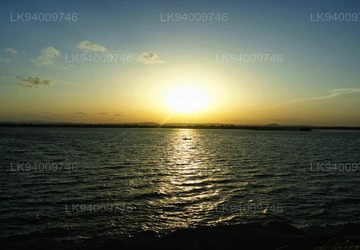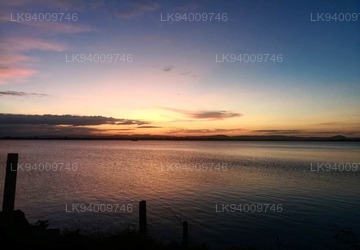
Polonnaruwa City
Polonnaruwa, a UNESCO World Heritage Site in Sri Lanka, was the country's medieval capital (11th-13th century). Renowned for its well-preserved ruins, including the iconic Gal Vihara statues, it showcases impressive architecture, reflecting the grandeur of the ancient Sinhalese civilization.
Parakrama
ParakramaSamudra: Morze Króla Parakramabahu
Sri Lanka ma dwa duże sezony monsunowe, każdy trwa około trzech miesięcy. Reszta roku pozostaje sucha i gorąca, z wyjątkiem kilku krótkich burz wywołanych ciepłem w nocy. Ten klimat, z brakiem regularnej wody, może mieć druzgocący wpływ na tych, którzy zarabiają na życie z rolnictwa. Parakrama Samudra na Sri Lance była jednym z takich rozwiązań problemu braku wody.Próbujączłagodzić ten problem, wielu starożytnych królów budowało zbiorniki, które regulują wodę. Parakrama Samudra też jest taką konstrukcją zbudowaną w Polonnaruwa przez króla Parakramabahu, pierwszego, który rządził tam od 1153 AD do 1153 AD. Morze Parakrama lub Parakrama Samudra pierwotnie składało się z pięciu dużych zbiorników, które odciążyły nacisk na główną zaporę. Pierwszy zbiornik Thopa Vewa istniał już w czasach króla Parakramabahu, który został zbudowany w 386 r. Król miał włączone inne duże zbiorniki i cały system się rozbudował. Ponadto wokół zbiorników pierwotnych zbudowano wiele mniejszych zbiorników, aby zasilać je wodą i usuwać nadmiar wody.
ParakramaSamudra:Główne zbiorniki oryginalnej Parakrama Samudra
1. Thopa Vewa
2. Eramudu Vewa (Katu Vewa)
3. Dumbuthula Vewa
4. Kalahagala Vewa
5.
JednakBhu Vewa, podczas rekonstrukcji w XIX wieku woda dostarczana do Thopa Vewa zaczęła płynąć do Bhu Vewa w wyniku nowego błędu strukturalnego. Z możliwością zniszczenia przez zalanie wiszące nad głowami, inżynierowie podjęli szybką decyzję o zbudowaniu tymczasowej tamy, aby zatrzymać przepływ wody. Niestety oddzieliło to ostatnie dwa zbiorniki, Kalahagala Vewa i Bhu Vewa, od systemu całkowicie. Tymczasowa tama stała się stałą drogą izolującą pierwsze trzy zbiorniki wodne w mniejszą wersję pierwotnie rozległej Parakramy Samudry. Ponadto rekonstrukcje dodatkowo zmniejszyły pojemność zbiornika dzięki całkowitemu zignorowaniu złożonej starożytnej technologii, z którymi został zbudowany.
ParakramaSamudra: Obecne wymiary Parakrama Samudra
Długość: 14 km (8 ½ mil) Wysokość z zewnątrz: 12.2m (40 stóp) Średnia głębokość: 25 stóp
About Polonnaruwa District
Polonnaruwa is the 2nd largest city in north central province in Sri Lanka. The ancient city of Polonnaruwa has been declared a World Heritage site by UNESCO Polonnaruwa has a great history of conquest and struggle behind it and rightfully forms the third element in the Cultural Triangle. Located about 140 kms north east from Kandy,Polonnaruwa offers hours of endless pleasure for history and culture lovers, as there are numerous sights of significance.
Much of the physical ruins standing today are credited to King Parakrama Bahu I who spent many royal resources on town planning, including parks, edifices, irrigation systems and so on. The period of his rule is considered a golden age where the kingdom thrived and prospered under a visionary ruler. The Parakrama Samudra is a mammoth tank and named after its patron. The popular kings Royal Palace, the Audience Hall encircled by beautifully carved stone elephants and the Bathing Pool reflect the superior engineering capabilities of the time.
About North Central Province
North Central Province which is the largest province in the country covered 16% of total country's land area. North Central Province consist two districts called Polonnaruwa and Anuradhapure. Anuradhapura is the largest district in Sri Lanka. Its area is 7,128 km².
North Central Province has numerous potentials for Investors to start their Businesses, especially Agriculture, agro based industries and Livestock sectors. More than 65% of North Central Province's people depend on basic Agriculture and agro base industries. NCP also called "Wew Bendi Rajje" because there are more than 3,000 medium and large scale tanks situated in the province. Sri maha bodiya, Ruwanweli seya, Thuparama dageba, Abayagiri Monastry, Polonnaruwa Rankot wehera, Lankathilake are scared

